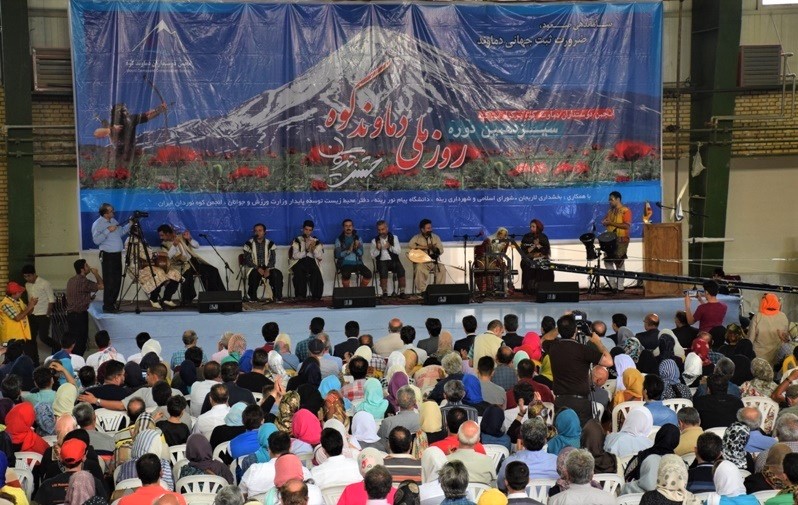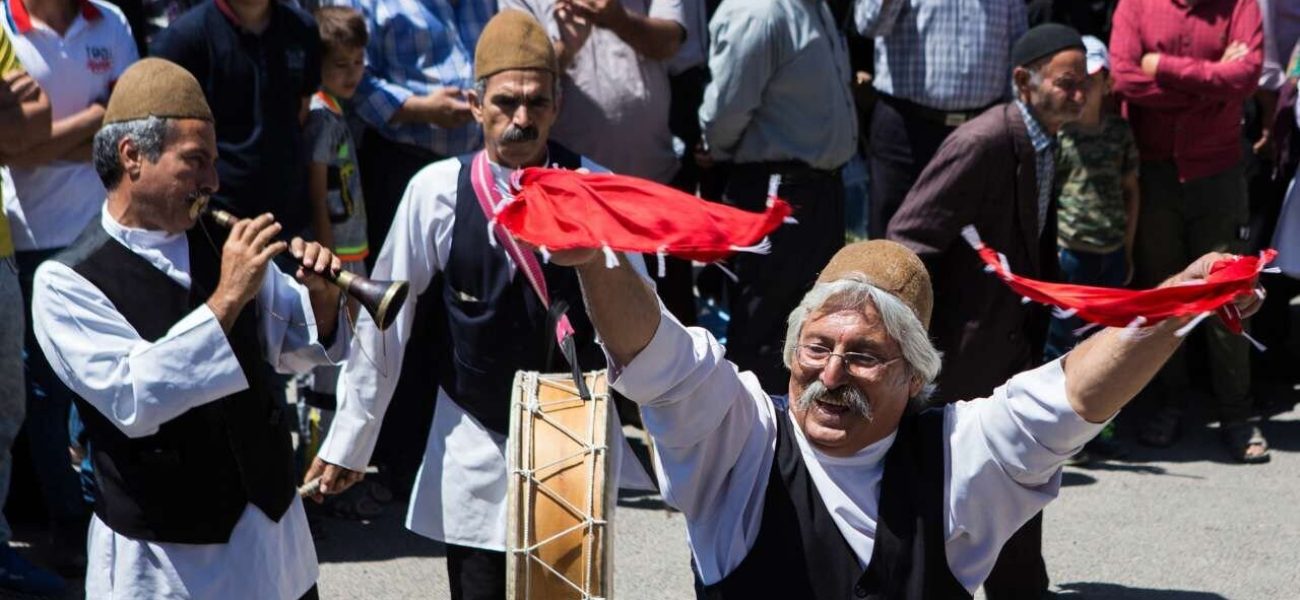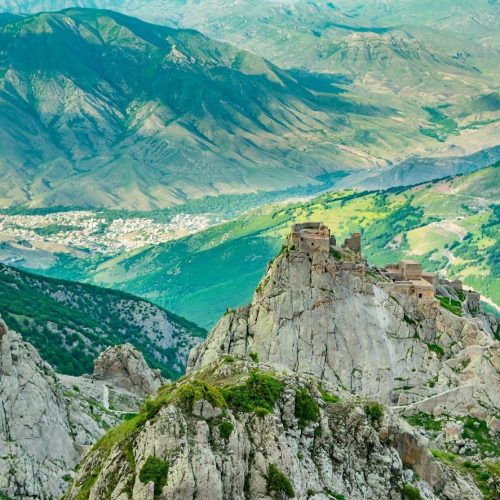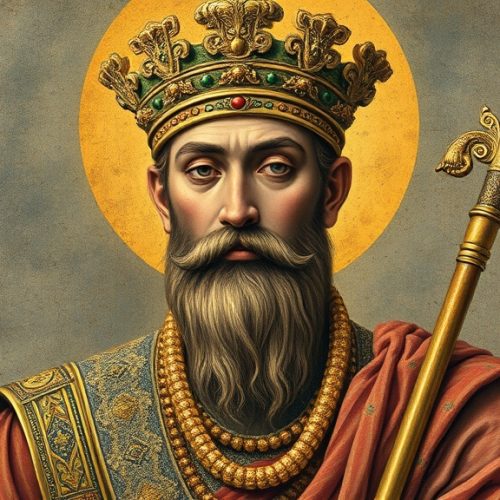In the heart of early summer, when the days are longest and the sun’s warmth is at its peak, the ancient festival of Tirgan bursts into vibrant life. Celebrated annually on Tir 13 (July 2, 3, or 4), Tirgan is a time of joy, community, and cultural remembrance for Iranians. This festival, steeped in millennia of history, weaves together the threads of mythology, tradition, and contemporary practice. As we delve into the essence of Tirgan, we uncover its rich tapestry and understand its profound impact on Iranian cultural identity.
Origins and Historical Context
The origins of Tirgan trace back to the heart of ancient Persia, a civilization that thrived on the fertile lands between the deserts and the mountains. This festival, like many others in Iranian culture, is deeply intertwined with Zoroastrianism, the ancient pre-Islamic religion of Persia. Zoroastrianism’s emphasis on the elements, particularly fire and water, is vividly reflected in Tirgan’s celebrations, which revolve around the theme of water.
At the core of Tirgan’s mythology is the tale of Tishtrya, the divine archer and deity of rain. Tishtrya is depicted as a radiant white horse that gallops across the sky, bringing life-giving rain to the earth. According to Zoroastrian texts, Tishtrya engaged in a cosmic battle with Apush, the demon of drought and dryness. This mythological conflict represents the eternal struggle between the forces of good and evil, light and darkness, fertility and barrenness. Tishtrya’s victory over Apush ensures the arrival of rain, which is essential for agriculture and sustenance in the arid regions of Iran.
The celebration of Tirgan is believed to date back to at least the Achaemenid Empire (550-330 BCE), a period marked by significant cultural and religious developments. Historical records suggest that the Achaemenid kings, known for their appreciation of Zoroastrian rituals, might have observed Tirgan as a royal festival, celebrating it with grand feasts and public ceremonies. These early celebrations laid the groundwork for the rich traditions that would evolve over the centuries.
In addition to its mythological roots, Tirgan holds historical significance related to Iranian national identity. One prominent legend associated with Tirgan involves Arash the Archer, a heroic figure in Persian folklore. As the story goes, after a prolonged and devastating drought, the Iranian king and the Turanian king agreed to end their conflict by determining their borders based on the range of an arrow shot by Arash. Arash, embodying the spirit of self-sacrifice, climbed to the top of Mount Damavand and shot an arrow that flew across the sky for days, finally landing far into the Turanian territory. This act not only expanded the Iranian lands but also brought about the much-needed rains. Tirgan, therefore, commemorates both the historical expansion of the Iranian territory and the symbolic victory of life and prosperity over desolation.
The historical context of Tirgan is also reflected in the agricultural rhythms of ancient Iran. As a predominantly agrarian society, ancient Iranians relied heavily on the timely arrival of rain for their crops. The festival’s timing in early summer coincides with the critical period when crops required ample water to grow. Thus, Tirgan served both as a religious observance and a practical invocation for rain and agricultural fertility. The collective prayers and rituals performed during Tirgan were meant to ensure a bountiful harvest, reflecting the deep connection between the festival and the agrarian calendar.
Furthermore, Tirgan’s historical significance extends to its role in unifying various regions and communities within the vast Persian Empire. Despite the diverse ethnic and cultural landscape of ancient Persia, festivals like Tirgan provided a common cultural framework that fostered a sense of unity and shared identity among the people. The universal themes of water, fertility, and renewal transcended regional differences, allowing Tirgan to become a festival celebrated by all, regardless of their local customs or traditions.
As we trace the origins of Tirgan, it becomes evident that this festival is not merely a relic of the past but a living tradition that has adapted to the changing tides of history. Its roots in ancient mythology, its historical associations with national identity, and its practical significance in the agricultural calendar have all contributed to its enduring legacy. Tirgan continues to be a vibrant celebration, embodying the resilience and continuity of Iranian culture through the ages.
Cultural Significance

Tirgan is not merely a festival; it is a profound cultural expression imbued with layers of symbolism and meaning that resonate deeply with the Iranian people. It serves as a reminder of the importance of water, a precious resource in the arid landscapes of Iran. Water, in the context of Tirgan, transcends its physical properties to become a symbol of purity, renewal, and life itself. This festival underscores the symbiotic relationship between humanity and nature, highlighting how essential elements of the natural world are revered and celebrated in Iranian culture.
The cultural significance of Tirgan is rooted in its embodiment of resilience and hope. The celebration of Tishtrya’s victory over Apush is more than a mythological story; it is a powerful allegory for the triumph of good over evil, light over darkness, and life over desolation. This message is timeless and universal, resonating across generations and offering a sense of continuity and shared cultural heritage. It is a testament to the Iranian spirit of perseverance and optimism, even in the face of adversity.
Tirgan’s significance is further amplified by its connection to other major Iranian festivals, particularly Nowruz, the Persian New Year, and Mehregan, the festival of autumn. These festivals collectively underscore the cyclical nature of time and the perpetual renewal of life. Tirgan, falling in the early days of summer, marks a period of growth and vitality, serving as a seasonal counterpart to Nowruz’s springtime renewal and Mehregan’s autumnal harvest. This seasonal triad of festivals reflects the agricultural rhythms of ancient Iran and the profound respect for the cycles of nature.
Moreover, Tirgan plays a crucial role in preserving and transmitting cultural values and traditions. Through its rituals and celebrations, Tirgan reinforces key aspects of Iranian identity, such as the reverence for natural elements, the importance of communal bonds, and the celebration of historical and mythological narratives. These values are embedded in the fabric of Iranian society and are passed down through generations, ensuring the continuity of cultural knowledge and practices.
One of the most vibrant traditions associated with Tirgan is the playful water splashing, which has profound symbolic significance. This tradition, where participants joyously splash water on each other, is not only a means of physical refreshment but also a symbolic act of purification and renewal. Water, being the source of life, is celebrated in its most joyous form, highlighting its role in sustaining life and fostering growth. This ritual serves as a reminder of the essential connection between water and life, a theme that is particularly resonant in Iran’s often harsh and arid environment.
Feasting is another cornerstone of Tirgan celebrations, reflecting the rich culinary heritage of Iran. Traditional dishes prepared during the festival, such as ash-e shir (a sweet milk-based soup) and sholeh zard (a saffron rice pudding), are not merely food items but cultural artifacts that tell the story of Iranian culinary history. These dishes are imbued with symbolic meanings, representing abundance, prosperity, and the nurturing qualities of food. The communal aspect of feasting, where families and friends gather to share meals, reinforces social bonds and fosters a sense of togetherness.
Dance, music, and storytelling add further dimensions to the Tirgan festivities. Traditional dances, often performed in a circle to symbolize unity and continuity, are accompanied by rhythmic music that evokes the historical and cultural heritage of Iran. Music, with its melodic and lyrical richness, serves as a vehicle for expressing the joys and sorrows of life, while storytelling sessions recount the myths of Tishtrya and the significance of Tirgan, bridging the gap between past and present. These performative aspects of Tirgan celebrations not only entertain but also educate, preserving the oral traditions and cultural narratives that are central to Iranian identity.
In the context of modernity, Tirgan continues to adapt and evolve, reflecting the dynamic nature of Iranian culture. While traditional practices are maintained, contemporary elements are often incorporated, creating a vibrant and living tradition that resonates with both the young and the old. Urban centers in Iran, as well as diaspora communities around the world, celebrate Tirgan with a blend of old and new practices, from traditional water splashing to modern music concerts and cultural exhibitions. These contemporary celebrations highlight the festival’s enduring relevance and its ability to adapt to changing times and environments.
Tirgan’s cultural significance is also evident in its role in fostering a sense of national identity and pride among Iranians. In a world where cultural traditions are often overshadowed by globalization and rapid change, Tirgan stands as a beacon of cultural resilience and continuity. It provides a space for Iranians to reconnect with their roots, celebrate their heritage, and pass on their cultural values to future generations. This role is particularly important for the Iranian diaspora, where Tirgan serves as a vital link to the homeland, fostering a sense of belonging and cultural pride.
Tirgan is much more than a festival; it is a profound cultural expression that encapsulates the essence of Iranian identity. Through its rich tapestry of rituals, traditions, and symbolic meanings, Tirgan celebrates the vital connection between humanity and nature, the resilience of the human spirit, and the enduring legacy of Iranian culture. As we celebrate Tirgan, we are reminded of the timeless values that define us and the shared heritage that unites us, ensuring that the spirit of Tirgan continues to thrive for generations to come.
Celebration Traditions
The joyous spirit of Tirgan is best captured through its vibrant and diverse traditions, each of which reflects the festival’s deep historical roots and cultural significance. Among these traditions, the exuberant water splashing ritual stands out as the most iconic and widely recognized. Participants, both young and old, engage in playful water fights, drenching each other in a communal celebration of life and vitality. This practice not only serves as a delightful respite from the summer heat but also symbolizes the blessings of rain and the renewal of the earth. Water, being a scarce and precious resource in many parts of Iran, is celebrated with a sense of reverence and joy, underscoring its essential role in sustaining life.
The water splashing tradition is thought to have originated from the ancient Zoroastrian reverence for water as a purifying and life-giving element. In this context, the act of splashing water becomes a symbolic gesture of cleansing and renewal, echoing the festival’s themes of fertility and growth. It is not uncommon for entire communities to gather near rivers, springs, or fountains to participate in this ritual, turning public spaces into vibrant hubs of activity and laughter.
Feasting is another cornerstone of Tirgan celebrations, reflecting the rich culinary heritage of Iran. Traditional dishes prepared during the festival are not merely food items but cultural artifacts that tell the story of Iranian culinary history. Each dish is imbued with symbolic meanings, representing abundance, prosperity, and the nurturing qualities of food. For instance, ash-e shir, a sweet milk-based soup, is a popular dish during Tirgan. Made with milk, rice, sugar, and rosewater, this dish symbolizes purity and sweetness, offering a refreshing contrast to the summer heat. Another beloved dish is sholeh zard, a saffron rice pudding that is rich in flavor and tradition. The golden color of the saffron symbolizes wealth and happiness, while the fragrant aroma of rosewater and cinnamon adds to the sensory experience of the festival.
The preparation and sharing of these traditional foods foster a sense of togetherness and community. Families often come together to cook and share meals, creating an atmosphere of warmth and conviviality. This communal aspect of feasting reinforces social bonds and serves as a reminder of the importance of family and friendship in Iranian culture. It is not just the act of eating that is celebrated, but the entire process of preparing and sharing food, which becomes a ritual of its own.
Dance and music add further dimensions to the Tirgan festivities, infusing the celebrations with energy and cultural richness. Traditional dances, often performed in a circle to symbolize unity and continuity, are accompanied by rhythmic music that evokes the historical and cultural heritage of Iran. These dances are not merely performances but participatory activities that invite everyone to join in. The circular formation of the dances represents the cyclical nature of life and the unbroken chain of tradition that connects the past to the present. Participants often wear colorful costumes that reflect regional styles, adding to the visual splendor of the festivities.
Music, with its melodic and lyrical richness, serves as a vehicle for expressing the joys and sorrows of life. Traditional instruments such as the tar (a long-necked lute), santur (a hammered dulcimer), and daf (a large frame drum) create a captivating auditory landscape that enhances the festive atmosphere. The songs performed during Tirgan often recount the myths of Tishtrya and other heroic tales, bridging the gap between past and present and ensuring that these stories continue to be passed down through generations.
Storytelling is another vital component of Tirgan celebrations. Elders and storytellers recount the myths and legends associated with the festival, such as the tale of Tishtrya’s battle with the demon of drought and the heroic deeds of Arash the Archer. These stories are more than just entertaining narratives; they are didactic tools that convey moral lessons, cultural values, and historical knowledge. Storytelling sessions often take place in communal settings, where listeners of all ages gather to hear the tales. This practice not only preserves the oral traditions of Iranian culture but also fosters a sense of intergenerational connection and continuity.
Another tradition associated with Tirgan is the tying of rainbow-colored bands, known as “tir-i rangin,” around the wrists. These bands are typically worn for ten days and then thrown into a stream, symbolizing the wish for a prosperous year ahead. The colorful bands are reminiscent of rainbows, which are seen as auspicious signs of hope and renewal. This practice is particularly popular among children, who delight in the vibrant colors and the act of making wishes.
In addition to these traditional practices, Tirgan celebrations often include a variety of other activities that vary by region. In some areas, people participate in wrestling matches, horse racing, and other sports that reflect the martial and competitive spirit of ancient Iran. These activities not only provide entertainment but also serve as a reminder of the physical strength and endurance valued by Persian culture.
In urban centers, modern Tirgan celebrations may feature cultural exhibitions, art displays, and theatrical performances that highlight the rich heritage of Iran. These events often attract large audiences and provide an opportunity for Iranians to showcase their culture to the broader public. Diaspora communities, particularly in North America and Europe, have embraced Tirgan as a means of preserving and promoting their heritage. Festivals in cities like Toronto and Los Angeles feature elaborate programs that include traditional and modern elements, from water splashing to Persian pop concerts. These contemporary celebrations highlight the festival’s enduring relevance and its ability to adapt to changing times and environments.
Overall, the traditions associated with Tirgan are a vibrant tapestry of cultural practices that celebrate the essence of Iranian identity. From the playful water splashing and communal feasting to the rhythmic dances and evocative storytelling, each element of the festival reflects the rich cultural heritage of Iran. As we participate in these traditions, we are reminded of the enduring values that define us and the shared heritage that unites us, ensuring that the spirit of Tirgan continues to thrive for generations to come.
Modern-Day Celebrations
While deeply rooted in tradition, Tirgan has evolved to reflect contemporary sensibilities. In modern Iran, as well as among the Iranian diaspora, Tirgan is celebrated with a blend of old and new practices. Urban centers host large-scale events featuring music performances, dance shows, and cultural exhibitions, attracting both Iranians and curious onlookers.
Diaspora communities, particularly in North America and Europe, have embraced Tirgan as a means of preserving and promoting their heritage. Festivals in cities like Toronto and Los Angeles feature elaborate programs that include traditional and modern elements, from water splashing to Persian pop concerts.
These modern-day celebrations illustrate the adaptability of Tirgan, showcasing how ancient traditions can thrive in new environments. They also highlight the festival’s role in maintaining cultural connections and fostering a sense of belonging among Iranians worldwide.
Anthropological Perspectives
Anthropologically, Tirgan serves as a fascinating lens through which to examine the dynamics of community bonding and cultural identity. The festival acts as a social glue, bringing together people from diverse backgrounds to celebrate a shared heritage. This communal participation reinforces social bonds and fosters a sense of unity.
Tirgan’s social functions are manifold. It provides a structured opportunity for community members to interact, exchange stories, and reaffirm their cultural values. The water splashing, in particular, breaks down social barriers, creating a space for joyous, egalitarian interaction.
Comparatively, Tirgan shares similarities with other water-related festivals around the world, such as Thailand’s Songkran or India’s Holi. These parallels highlight universal human themes of renewal, purification, and the celebration of natural elements, offering a global perspective on the festival’s significance.
Sociological Implications
From a sociological standpoint, Tirgan is a powerful marker of social and cultural resilience. It underscores the enduring nature of Iranian identity, demonstrating how traditions can adapt and survive amidst changing social landscapes. The festival acts as a bulwark against cultural erosion, preserving vital aspects of Iranian heritage.
Tirgan’s impact on identity and heritage preservation is profound. For younger generations, it provides a tangible link to their cultural roots, fostering pride and continuity. The festival’s rituals and narratives offer a sense of historical continuity, connecting present-day Iranians with their ancient past.
Moreover, Tirgan plays a crucial role in fostering intergenerational connections. Elders pass down the stories and traditions to the young, ensuring the perpetuation of cultural knowledge. This transmission of heritage is essential for maintaining a vibrant, living culture that can navigate the complexities of modernity. Tirgan, with its ancient roots and vibrant celebrations, stands as a testament to the enduring spirit of Iranian culture. This early summer festival, marked by water splashing, feasting, and communal joy, encapsulates themes of renewal, resilience, and unity. As we reflect on Tirgan’s significance, we recognize its role in preserving cultural identity, fostering community bonds, and celebrating the life-giving forces of nature. In the modern world, where cultural traditions can often be overshadowed by rapid change, Tirgan offers a beacon of continuity, reminding us of the profound beauty and strength inherent in our shared heritage.




